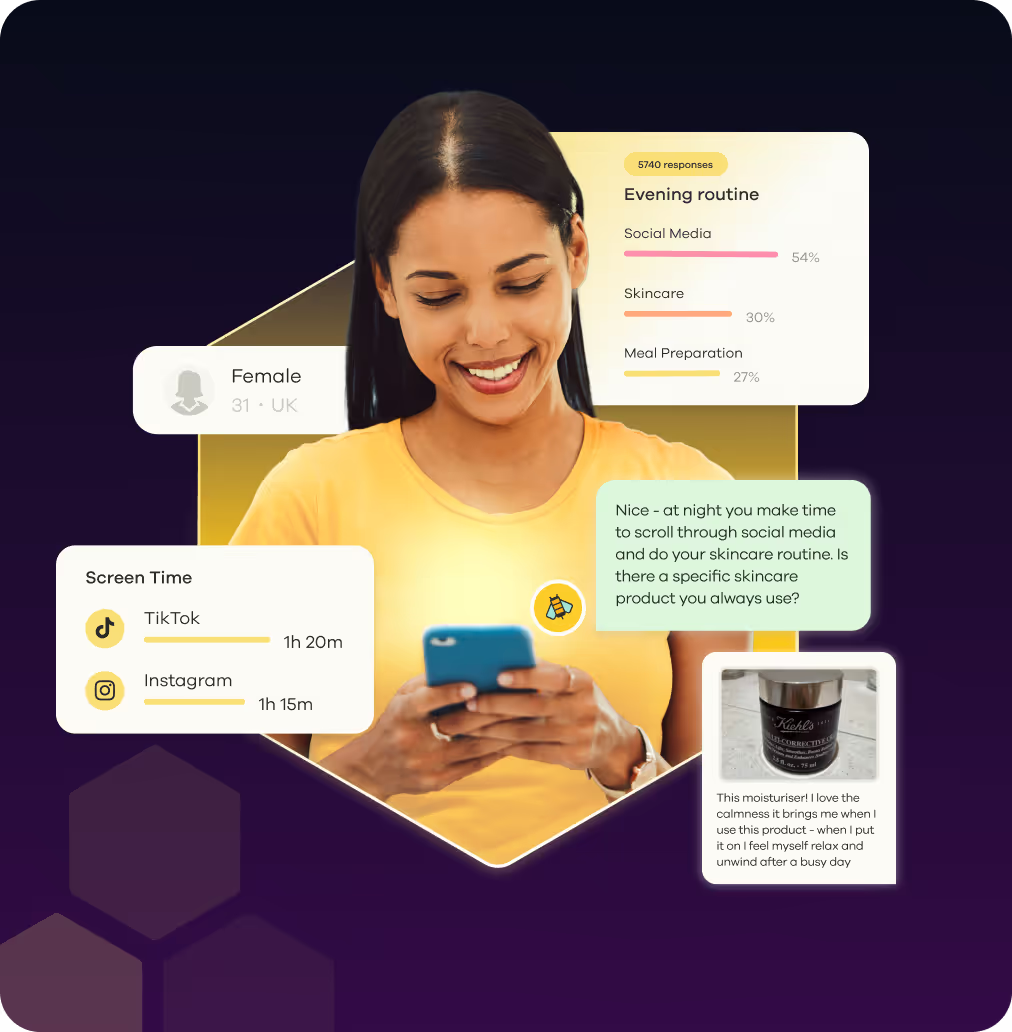In the world of data organisation, taxonomies and ontologies are fundamental concepts that underpin how we categorise and understand information. While they may seem similar at first glance, they serve distinct purposes and have different applications, especially in the context of market research. At Streetbees, we utilise both to extract actionable insights from data.
To gain a deeper understanding of the role of taxonomies and ontologies in unearthing consumer insights, we spoke to our in-house expert Daisy Morrison, Product Taxonomies Manager at Streetbees.
Let's delve into what sets them apart and how they each contribute to our understanding of complex datasets.
Defining taxonomies
A taxonomy is a structured system used to order, classify, and retrieve data. It’s like a detailed, hierarchical map that helps us navigate through information efficiently. Taxonomies are all around us, helping us find items in a supermarket, search for flights, or receive personalised Netflix recommendations. As Daisy puts it, “A good taxonomy is essential for ensuring that our data is both accurate and actionable. By having mutually exclusive and collectively exhaustive labels, we can guarantee that we’re capturing all relevant information without any overlap or ambiguity.”
At Streetbees, we use taxonomies to transform rich qualitative conversations into quantifiable insights. Our taxonomies are crafted with care to be mutually exclusive (no overlapping terms or duplications) and collectively exhaustive (covering every conceivable data point with each one tailored to a client's specific use case) and integrate customer-centric terminology. These are the three key criteria that make up a good taxonomy.
Understanding ontologies
Ontologies, on the other hand, go beyond the hierarchical classification of taxonomies. They document the relationships between terms and concepts within a particular domain, creating a web of interconnected information. Ontologies are used in large scientific or technical databases and underpin much of AI's understanding of the world.
For instance, while a taxonomy might categorise "Apple" under "Fruit," an ontology would link "Apple" to its colour, the regions where it is grown, the dishes it's used in, the seasons it's harvested, and even its mentions in popular culture. This interconnected web of information allows for a deeper understanding and more complex queries.
Daisy explains, “Ontologies are about documenting the relationships between all the terms. This is the kind of knowledge structure that underpins a lot of AI, where a term like ‘apple’ can be understood in the context of its colour, origin, uses, and more.”
Why both matter in market research
In market research, both taxonomies and ontologies play vital roles. Taxonomies help in organising data into clear, actionable categories, making it easier to derive insights. Ontologies, meanwhile, underpin the AI, providing the depth needed to understand the broader context and relationships within the data, leading to more nuanced and comprehensive insights.
At Streetbees, we combine these approaches to provide our clients with robust, flexible, and insightful data analysis. Our taxonomies are built with precision, and our AI-driven insights harness the contextual depth of an ontology, allowing us to link data points in ways that reveal deeper trends and patterns.
Daisy highlights, “Our goal is to empower clients with the ability to label and categorise their data in ways that are most beneficial to their business needs. By combining taxonomies and ontologies, we can offer insights that are both detailed and contextually rich.”
Taxonomies and ontologies are essential tools in the modern data landscape. While taxonomies provide the structure needed for efficient data retrieval, ontologies offer the context necessary for deep understanding. By leveraging both, businesses can not only categorise their data effectively but also uncover richer, more meaningful insights. At Streetbees, our 9 years of expertise in both areas ensures that our clients get the most out of their data, enabling them to make informed, impactful decisions.
About Daisy

Daisy Morrison is Streetbees' Product Taxonomy Manager. After joining the Operations Team in 2018, she transitioned through roles in Field and Processing to eventually take on Taxonomy, founding the team and growing them alongside our expanding list of clients and categories. With the transition to an AI-led product, she now works on ensuring our SBX product is grounded in best-in-class taxonomy practices, building tools and features that support optimum data classification.


.jpeg)


